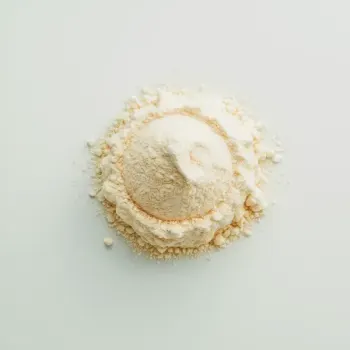Baking powder is a leavening agent containing a combination of acid, base, and moisture-absorbing agent, which reacts with heat and moisture to make baked goods rise. Baking soda, also known as sodium bicarbonate, needs both an acid and liquid to activate and help dough rise.

Baking powder is a complete leavening agent that contains both an acid and a base. It's typically made from baking soda, cream of tartar, and a moisture-absorbing agent. It reacts to moisture and heat, releasing carbon dioxide and causing your dough or batter to rise.

Baking soda, also known as sodium bicarbonate, is a base that requires an acid and a liquid to activate. When it reacts with acidic ingredients like buttermilk, lemon juice, or vinegar, it produces carbon dioxide bubbles that help the dough rise.
The main difference is that baking powder already contains an acid and simply needs a liquid to become active, whereas baking soda requires both an acidic ingredient and a liquid. Baking soda is much stronger than baking powder, and they can't always be used interchangeably without adjusting the recipe.

Your ultimate Recipe Box, Meal Planner, and Cooking Class all in one
Best used in recipes for quick breads that don't contain an acidic ingredient. It creates a light, airy texture in muffins and biscuits. Ideal for banana bread or zucchini bread that has natural acidity. Baking soda helps neutralize the acid and adds a nice brown color to the crust.
Produces softer, lighter cookies. Use it in sugar cookies or cakey chocolate chip cookies for a delicate texture. Gives cookies a crisp texture and golden color. Perfect for classic chocolate chip cookies or gingersnaps.
Creates a fine crumb and a tender rise in cakes, especially when no acidic ingredient is present in the recipe. Use it for vanilla or sponge cakes. Used in carrot cake or red velvet cake where there is acidity from ingredients like buttermilk. It helps the cake rise while keeping it moist.
Both baking powder and baking soda are low in calories and do not contribute significantly to the nutritional value of baked goods.
| Nutrient | Baking Soda ( per Teaspoon ) | Baking Powder ( per Teaspoon ) |
|---|---|---|
| Sodium | 1256mg | 480mg |
| Calcium | 0mg | 0mg |
| Calories | 0 | 5 |
| Carbohydrates | 0g | 1g |
No, because baking powder is much weaker than baking soda and the results will not be the same.
Using too much baking soda can result in a bitter taste and can also cause excessive browning and spreading in cookies.
Yes, both leavening agents can lose potency over time. They should be replaced every 6-12 months for best results.
For baking soda, add a few drops of vinegar and look for fizzing. For baking powder, mix with hot water and look for bubbling.
Yes, you can make your own baking powder by mixing two parts cream of tartar with one part baking soda and one part cornstarch.